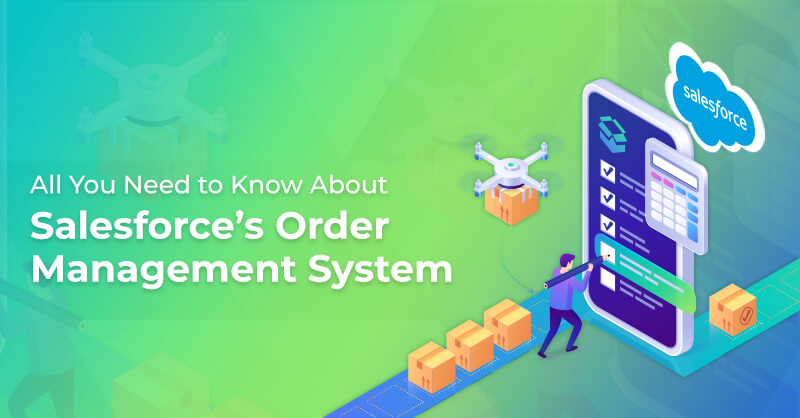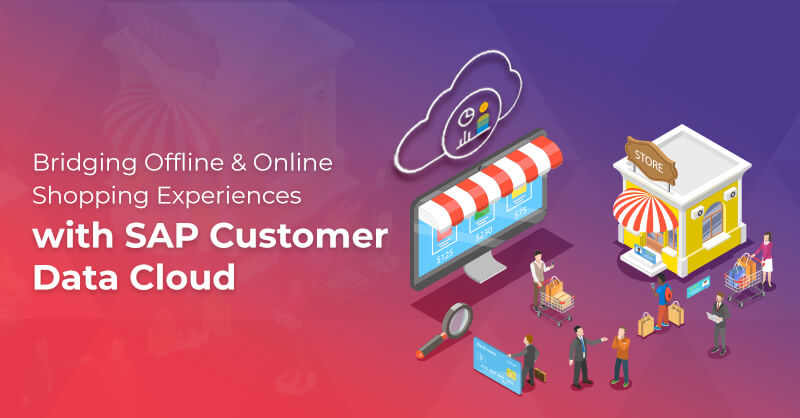Mailchimp Integration with Salesforce Commerce Cloud
Written by Shamshad Azam
Manager - Business Analyst at Royal Cyber
Mailchimp Overview
Mailchimp is a marketing platform that helps us manage and talk to clients and other interested parties. It focuses on healthy contact management practices, beautifully designed campaigns, and powerful data analysis.
MailChimp is an email marketing platform. The web-based software enables us to:
- Design marketing or informational email messages
- Create and organize lists of recipient email addresses
- Send the finished email messages to the recipients in the lists
- Review data about the emails we sent (# of people who opened a message, etc.)
This kind of service is usually leveraged for creating email newsletters or advertisements that people select to receive, by providing their email address into a form on the website. We can integrate MailChimp with social media services and applications to collect contacts for the list of recipients. Emails sent by MailChimp on our behalf comply with anti-spam regulations, which is important to reduce the chance that our messages will be filtered into spam.
Mailchimp Features
It’s continually improving services and timely innovative features have allowed it to be on the radar of marketers and small business owners. Some of these features include:
Always Free
With MailChimp, we can send emails to our first 2000 subscribers or 12,000 emails in a month for free. If we want more than 2,000 subscribers, the plan starts at $10/month and increases according to the subscriber count.
Connect your store
You can connect an e-commerce (e.g. Salesforce Commerce Cloud) store with your MailChimp account and create focused email or ad campaigns, automate helpful product follow-ups, and send back-in-stock messaging.
Automation
MailChimp allows us to create and schedule emails anytime, from any platform and follow up on purchases, nurture leads, and offer recommendations to customers.
A/B Testing
Test and improve what works best by playing with different subject lines, images etc. & see what works or doesn't work with MailChimp’s A/B testing capacity.
Advanced Analytics
Track sales activities with revenue reports and see how we measure up with our competitors. MailChimp empowers users to know the right time to execute their campaigns to get the maximum out of their marketing efforts.
Segmentation
MailChimp even allows us to organize our email marketing contact data and build segments based on custom criteria with list management tools & integrations.
Mailchimp Pros
Thorough Reporting
Everything we need to know such as clients, geo-tracking, social media & Google Analytics integration.
Generous freemium plan
Most of the tools are available in the free plan, and we are allowed 10,000 emails to 2,000 of our subscribers which is not a bad deal.
Great template editor
MailChimp supports a clean interface and a simple, but powerful editor.
Set up Account
When we sign up for a Mailchimp account, we will enter our name and email address, and they will send us an activation email. The activation email contains the link which we need to click to activate the account.
Create a Campaign
We will craft our first campaign. A campaign is a message that we share via email, ads, or other channels. In Mailchimp, users mostly start with an email campaign.
To start a regular email campaign, follow the below steps.
- Click the Create drop-down and choose Email.
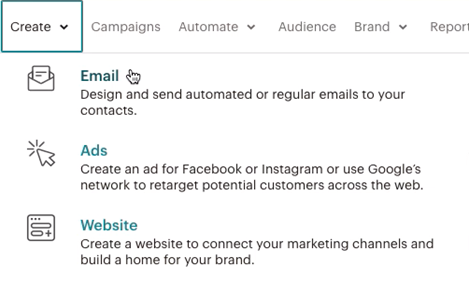
- Enter a campaign name and click Begin.
Generate Embedded Form Code
After we have created our signup form in the Form Builder, we can choose a form option, customize settings & generate the form code to add to our site.
Follow the below given steps to get the form code to add to our site:
- Navigate to the Audience tab.
- If we have more than one audience, click the Current audience drop-down and choose the one we want to work with.
- Click the Manage Audience drop-down & choose Signup forms.
- Choose embedded forms.

- Select a form type - Classic, Condensed, Horizontal or Unstyled and custom-make the form options.
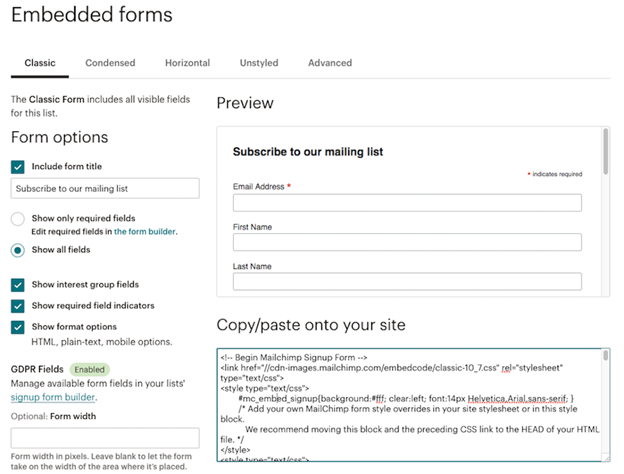
- Highlight the code in the Copy/paste onto the site field and copy it to the clipboard.
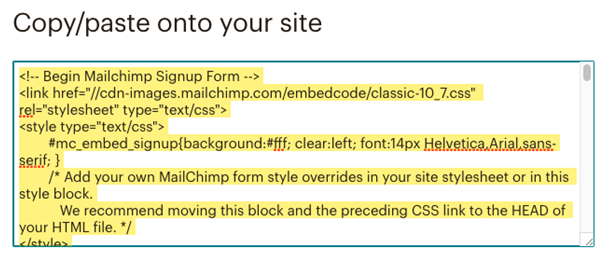
- Paste the embed form code into the website's HTML where we want the form to appear.
Set up Mailchimp in SFRA
- There is no link cartridge.
- We have created our custom cartridge.
- We created one form where customers can subscribe.
- We have placed the link form (subscribe) in the footer.
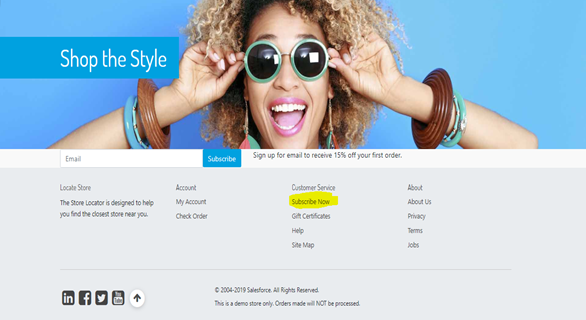
- Above, we have created an account on mailchimp.
- Copied the HTML form from the mailchimp site.
- Based on HTML form details, we have created one ISML to render the form and paste the required JS file, which came along with mailchimp form.
- Once the form is rendered in store, we have subscribed few accounts.
- Now check for new accounts in the mailchimp.
- Based on that accounts, we have created one campaign which sent emails to the registered accounts.
- We have also designed mails from mailchimp.
- All the mail is sent via mailchimp.
Royal Cyber
Royal Cyber has extensive experience in Salesforce Commerce Cloud and its integration with mailchimp. For more details, check the below URL: https://www.royalcyber.com/technologies/salesforce-commerce-cloud-demandware/

